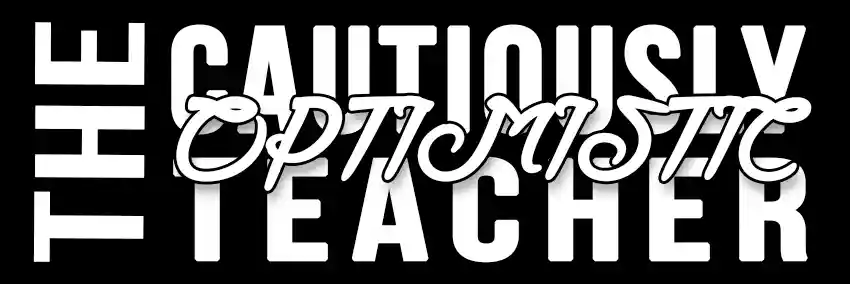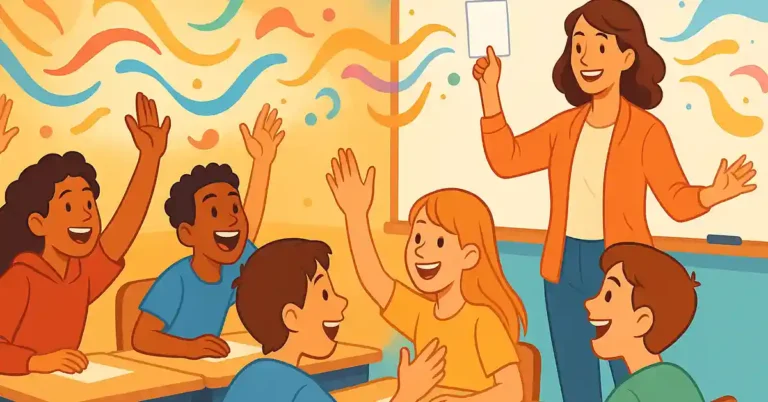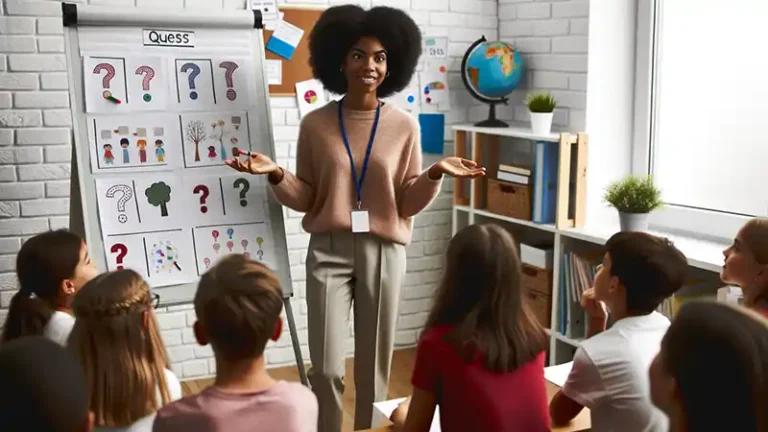Best Strategies for Teaching in Inclusive Classrooms
In recent years, the rise of inclusive classrooms has marked a significant shift in the educational landscape. Such environments celebrate diversity, bringing together students of varying abilities, backgrounds, and learning needs under one roof. The objective? To provide every child with an equitable opportunity to thrive academically and socially. At the heart of this movement is the realization that every child is unique, and that our educational systems should be equipped to nurture this individuality. However, fostering such a classroom environment requires more than just intent; it demands the adaptation and implementation of effective teaching strategies tailored for inclusive classrooms.
The significance of inclusive classrooms is vast. They embody a vision where barriers to learning are actively dismantled, allowing all students, irrespective of their abilities, to have access to high-quality education. This inclusion not only benefits the learners who previously might have been marginalized or excluded but it also enriches the learning experience for everyone involved. As peers collaborate and learn from one another, they’re exposed to a variety of perspectives that foster empathy, understanding, and a more comprehensive view of the world around them.
The importance of adapting teaching methods for diverse abilities cannot be overstated. A one-size-fits-all approach to education simply does not suffice in an inclusive classroom. As educators, our role is not to mold students into a predefined shape, but rather to facilitate a learning environment in which they can grow according to their unique potential. Channeling the philosophy of Carol Dweck, it’s essential to instill a growth mindset in educators themselves. This mindset will empower them to continuously seek out, experiment with, and refine their teaching strategies in inclusive classrooms to better serve their diverse cohort of students.
Understanding Inclusive Classrooms
Understanding Inclusive Classrooms
The concept of inclusivity has gained significant traction in various sectors, from workplaces to public spaces, and education is no exception. As we strive to understand the term in the context of education, it becomes clear that inclusive classrooms are more than just a trend or a buzzword; they are a paradigm shift in how we perceive and approach teaching.
Definition of Inclusive Classrooms
In essence, an inclusive classroom is a teaching environment where students of all abilities and backgrounds learn together. Instead of segregating students based on their learning needs or disabilities, these classrooms integrate everyone, aiming to provide equal opportunities for all. This does not imply that every student receives the exact same instruction or resources. On the contrary, it means that instruction and resources are tailored to meet each student’s individual needs within the shared environment. The idea is rooted in the belief that every student, irrespective of their abilities, has a right to access mainstream education and the numerous opportunities it offers.
Benefits for Students With and Without Special Needs
For Students with Special Needs:
Enhanced Social Interaction: By being part of the mainstream classroom, students with special needs can foster relationships with a broader range of peers. This exposure is instrumental in enhancing their social skills, understanding social cues, and building lasting friendships.
Higher Academic Expectations: Often, when students with special needs are segregated, they might be exposed to a diluted curriculum. In an inclusive setting, they are more likely to be held to the same academic standards as their peers, which can lead to greater academic achievements.
Development of a Growth Mindset: Drawing from Dweck’s philosophy, when students with special needs are included, they are continually exposed to challenges that they learn to navigate and overcome, fostering a belief in their ability to grow and achieve.
For Students Without Special Needs:
Cultivation of Empathy and Understanding: Interaction with peers who have diverse abilities fosters an environment where students without special needs develop a deeper understanding and empathy towards differences. This nurtures a more compassionate, understanding generation.
Diverse Learning Experiences: The varied teaching strategies employed in an inclusive classroom to cater to different needs often mean that students without special needs also benefit from a richer array of learning tools and techniques.
Preparation for the Real World: The world outside the classroom is diverse. By learning in inclusive settings, students are better prepared to interact, collaborate, and thrive in a world where they’ll encounter people from all walks of life.
In sum, the concept of inclusive classrooms is not just about bringing diverse learners together; it’s about creating a holistic environment where every student can reap the benefits of diversity. By understanding and embracing the philosophy and benefits behind such settings, educators can be better prepared to implement and champion teaching strategies in inclusive classrooms that cater to every student’s unique needs.
Assessment Strategies for Diverse Abilities

One of the cornerstones of effective education is assessment. It provides educators with a snapshot of where a student is in their learning journey, informing instruction and providing feedback. In an inclusive classroom, the challenge lies in ensuring that assessment is just as diverse as the student body. Traditional assessment methods might not capture the breadth and depth of every student’s understanding, especially when the range of abilities is wide. Adapting assessment strategies becomes crucial.
Multiple Forms of Assessment
Portfolios: Instead of relying solely on tests and quizzes, portfolios allow students to showcase their learning journey over time. This can include projects, essays, artwork, and reflections, offering a broader perspective on a student’s progress and abilities.
Presentations and Demonstrations: Some students can better express their understanding verbally or through demonstrations. Allowing these students to present their knowledge can offer insights into their comprehension that written tests might not capture.
Peer Assessment: Encouraging students to evaluate and provide feedback on each other’s work can not only help them understand the subject matter better but can also foster a sense of collaboration and mutual respect.
Self-Assessment: Guiding students to reflect on their own learning, identify their strengths and areas of improvement, and set goals can be a powerful tool. It not only gives teachers an insight into the student’s self-awareness but also encourages the development of a growth mindset.
Adjustments to Traditional Testing
Extended Time: Recognizing that students process information at different rates, providing additional time for those who need it ensures they aren’t penalized for their pace.
Differentiated Test Versions: Creating varying levels of test difficulty can ensure that all students are challenged according to their abilities. This doesn’t mean ‘easier’ tests for some but rather tailoring questions to assess the same concepts in ways that match diverse learning needs.
Alternative Settings: Some students may benefit from taking tests in a quieter environment or in smaller groups. This can help reduce anxiety and provide a more conducive atmosphere for concentration.
Use of Assistive Technologies: Tools such as speech-to-text software or screen readers can be invaluable for students with specific needs, ensuring they can access and respond to test materials in a way that best suits them.
Oral Examinations: For students who might struggle with written expression, an oral examination can provide an alternative means to demonstrate their understanding.
Adopting a flexible approach to assessment in inclusive classrooms is paramount. Just as we recognize the importance of differentiating instruction to cater to diverse needs, our assessment strategies must reflect the same level of adaptability and inclusiveness.
Adaptable Teaching Techniques
Inclusive classrooms call for teaching methods that can address the diverse needs of all students. Educators need strategies that are not only effective but also adaptable, ensuring that each student, regardless of their unique abilities, can grasp the subject matter. Here are some adaptable teaching methods tailored for inclusive classrooms:
At its core, differentiated instruction is about recognizing and catering to the varied learning needs of students. This approach asks educators to modify content, process, and product based on a student’s readiness level, interests, and learning profile.
Content Differentiation: Varying what students need to learn—be it through different books, resources, or media—ensures that every student can access the material in a way that suits them best.
Process Differentiation: This pertains to how students acquire and process information. Adapting activities, using graphic organizers, or employing technology can cater to different learning styles and paces.
Product Differentiation: Allowing students varied ways to demonstrate what they’ve learned—be it through essays, projects, or oral presentations—can cater to their strengths.
Universal Design for Learning (UDL) Principles
UDL is a framework that aims to improve and optimize teaching and learning for all individuals. It’s based on the idea that barriers to learning are not inherent in the capacities of learners, but instead arise in learners’ interactions with inflexible educational goals, materials, methods, and assessments.
Multiple Means of Representation: Offering information in multiple formats (visual, auditory, tactile) ensures that students have various ways to access content.
Multiple Means of Action and Expression: Providing students with different ways to interact with the content and demonstrate their understanding allows for varied expression.
Multiple Means of Engagement: Engaging students by offering choices in how they learn, tapping into their interests, and providing relevant challenges can make the learning experience more meaningful.
Flexible grouping is the practice of placing students in groups based on varied criteria at different times. It avoids static groups where students are always with the same peers.
Ability-Based Grouping: Occasionally, it can be beneficial for students of similar abilities to work together, especially when focusing on specific skills or concepts.
Mixed-Ability Grouping: This encourages peer mentoring, where students with different skill levels can learn from one another, fostering collaboration and empathy.
Interest-Based Grouping: Grouping students based on their interests can enhance engagement and allow for deeper exploration of topics.
Random Grouping: This can be a simple way to encourage students to work with various peers, building a sense of community and adaptability.
Adaptable teaching techniques are the heart and soul of an inclusive classroom. By embracing strategies that are flexible and responsive, educators can ensure that every student, irrespective of their unique abilities and backgrounds, has an equal opportunity to succeed.
Collaboration and Team Teaching

Inclusive education is not a solitary journey. The complexity and diversity of student needs in an inclusive classroom often necessitate collaboration among various educators and support staff. By pooling together different expertise, experiences, and perspectives, a richer, more adaptive learning environment can be created. In the spirit of Carol Dweck’s teachings, it’s this collaborative growth mindset, the idea that “together we can achieve more,” that drives the success of many inclusive classrooms.
Benefits of Collaborating with Special Education Teachers
Expertise in Differentiation: Special education teachers often come with a skill set tailored to adapt content, methodologies, and assessments to cater to diverse needs. Their insights can be invaluable in shaping instructional strategies.
Behavioral Strategies: Managing a classroom with a wide range of abilities can be challenging. Special education teachers often have techniques and strategies up their sleeves to manage behaviors effectively, ensuring a conducive learning environment.
Resource Sharing: They often have access to specialized materials, tools, and technologies designed for students with specific needs. Collaborating can mean sharing these resources for the benefit of all.
Engaging Teaching Assistants and Aides
Smaller Group Instruction: Teaching assistants can work with small groups, allowing for more personalized instruction and ensuring that each student gets the attention they need.
One-on-One Support: For students who require more intensive support, aides can provide targeted instruction, helping bridge any gaps in understanding.
Classroom Management: Their presence can be instrumental in managing classroom dynamics, ensuring that all students remain engaged and on task.
Peer Support and Buddy Systems
Social Integration: Pairing students with peers can aid in the social integration of students with special needs. It can help them feel more connected and reduce feelings of isolation.
Academic Support: A buddy can provide explanations, help with note-taking, or assist in tasks, ensuring that the academic needs of all students are met.
Promotion of Empathy: For the ‘buddies’ or supporting peers, this system provides an opportunity to develop empathy, understanding, and leadership skills.
Shared Responsibilities: Collaborative tasks or projects can be divided based on strengths and abilities, ensuring that every student can contribute in a meaningful way.
The beauty of collaboration and team teaching lies in its multiplicative effect. When educators and students come together, pooling their resources and expertise, the outcomes often exceed the sum of individual efforts. It embodies the principle that every individual, whether a special education teacher, an aide, or a student, brings unique value to the table.
Conclusion
In a world that constantly evolves, the realm of education is no exception. As classrooms become more diverse, the demand for adaptability in teaching methods becomes ever more paramount. Inclusive education isn’t just about integrating students of varied abilities; it’s a comprehensive approach that seeks to create environments where every student, irrespective of their background or ability, feels valued, challenged, and supported.
The significance of adapting teaching methods for an inclusive environment extends beyond the academic realm. It’s about cultivating a space where every student recognizes their potential, where challenges are viewed as stepping stones rather than barriers. In this environment, every mistake is an opportunity to learn, and every success, no matter how small, is celebrated.







